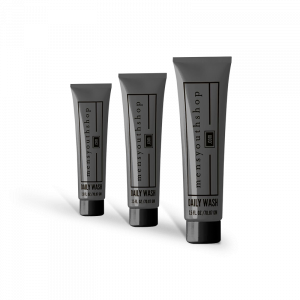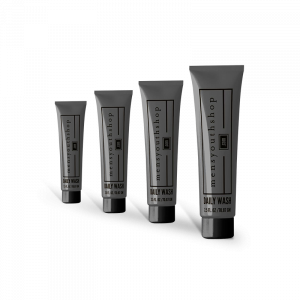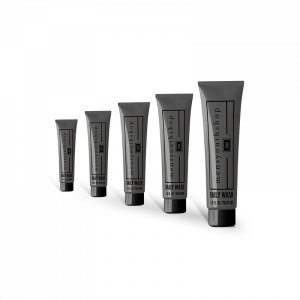
Skin cancer incidence rates continue to rise, making risk from excess sun exposure an important public health priority. Yet despite what we know about prevention, skin cancer remains the most commonly diagnosed cancer in the United States. Used with other sun protective measures, broad spectrum sunscreens with SPF values of at least 15 are critical elements for preventing skin cancer and protecting the skin from sunburn and other UV damage. With sunscreens now being used with greater frequency, in larger amounts, and by broader populations, it is more important than ever to ensure that sunscreens are safe and effective for daily, life-long use.
As published in the May 6, 2019, Journal of the American Medical Association, Matta et al,2 describe the results of an exploratory maximal usage trial (MUsT) evaluating the systemic absorption (through the skin and into the body) of sunscreen active ingredients using four commercially available sunscreen products applied under maximal use conditions. A MUsT study evaluates the systemic absorption of a topical drug (i.e., one applied to the skin) when used according to the maximum limits of the product’s directions for use. Because sunscreens are formulated to work on the surface of the skin, some have argued that sunscreens would not be absorbed in appreciable quantities and therefore that MUsT studies are unnecessary. In this pilot study, all four active ingredients tested were absorbed from each formulation tested, showing that absorption of sunscreens is not just a theoretical concern.
The fact that an ingredient is absorbed through the skin and into the body does not mean the ingredient is unsafe. Rather, this finding calls for further testing to determine the safety of that ingredient for repeated use. Such testing is part of the standard pre-market safety evaluation of most chronically administered drugs with appreciable systemic absorption. Recently, the U.S. Food and Drug Administration (FDA) issued a proposed rule3 to update regulatory requirements for most sunscreen products in the United States, where sunscreens are regulated as drugs. This action was aimed at bringing over-the-counter (OTC) sunscreens up to date with the latest scientific standards. As part of this rule, the FDA is asking industry and other interested parties for additional safety data on 12 active sunscreen ingredients currently available in marketed products. A key data gap for each of these 12 active sunscreen ingredients is understanding whether, and to what extent, the ingredient is absorbed into the body after topical application. As noted in the proposed rule, FDA expects that sunscreen active ingredients that are absorbed into the bloodstream at a level of 0.5 ng/mL (nanograms per milliliter) or higher, or that have potential safety concerns, would generally need to undergo further testing to help determine if they increase the risk for cancer, birth defects, or other adverse effects. All of the active ingredients in the study noted above were absorbed in levels substantially higher than the 0.5 ng/mL threshold value cited in the proposed rule. However, without further testing, FDA does not know what levels of absorption can be considered safe.
Since the FDA began regulating sunscreens in the 1970s, the agency’s understanding of drug absorption through the skin and the ability to measure drug absorption have advanced; at the same time, the use of sunscreens has increased. In the 1970s, sunscreens were used primarily on a seasonal basis to prevent sunburn, which is different from the frequent, daily use seen today. Additionally, intense exposure to sunscreen ingredients approaching the level used in conducting a MUsT study is common during outdoor activities. This includes use of sunscreens by pregnant women and young children. There have been a number of technological advances in the formulation of sunscreens, allowing creation of sunscreen products with SPFs greater than 15 and greater broad-spectrum protection against UVA and UVB. While important for improving efficacy, formulation advances have led to currently marketed products with more active ingredients combined together in higher concentrations than were previously used. These changing conditions of use and differences in sunscreen formulation may also lead to greater absorption and possibly additional risks. Further, laboratory technology has advanced, leading to better ability to detect ingredients and their metabolites (substances that active ingredients are changed to in the body after absorption).
A maximal usage trial (MUsT) is a standardized approach to assess the absorption of all drugs, including topical drugs, into the body. Understanding systemic absorption of drugs based on the maximum dose permitted in the label is a standard and customary step in assuring their safety. Absorption data can then be used with other safety testing to inform the overall benefit-risk evaluation of the drug or active ingredient. Over the past several decades, human absorption data using the MUsT study paradigm has become a routine part of the application for new drugs before approval. For OTC drugs such as sunscreens, the FDA is now requesting MUsT study data as well to support the Agency’s evaluation.
The FDA relies on manufacturers to provide the data on sunscreen active ingredients necessary to establish safety and effectiveness for use in sunscreens. The agency is committed to working with industry and public health stakeholders to help ensure the sunscreens used every day by consumers and their families are safe and effective for use. Our proposed rule has a comment period ending June 27. However, we understand that manufacturers may need additional time to generate new data and information. We will consider submitted comments from companies requesting that FDA defer further rulemaking with respect to a specific sunscreen active ingredient to allow the submission and evaluation of new safety and/or effectiveness data.
While industry and other interested parties develop further data, the public should continue to use sunscreens with other sun protective measures. Broad spectrum sunscreens with SPF values of at least 15 remain a critical element of a skin-cancer prevention strategy that includes other sun protective behaviors such as wearing protective clothing that adequately covers the arms, torso, and legs; wearing sunglasses and a hat that shades the whole head; and seeking shade whenever possible during periods of peak sunlight.
Theresa M. Michele, M.D.
 The Basic
The Basic
 The Complete
The Complete
 The Ultimate
The Ultimate
©2021 Mens Youth Shop